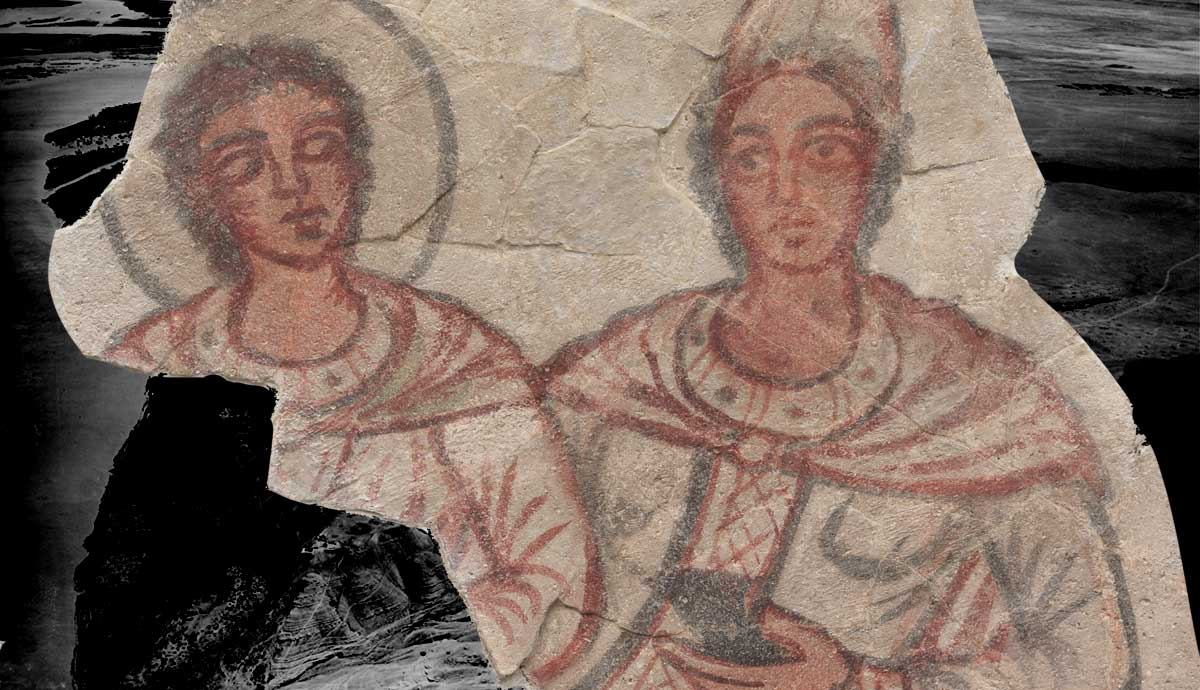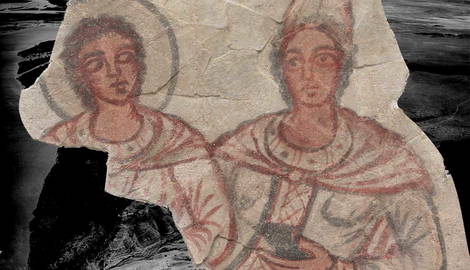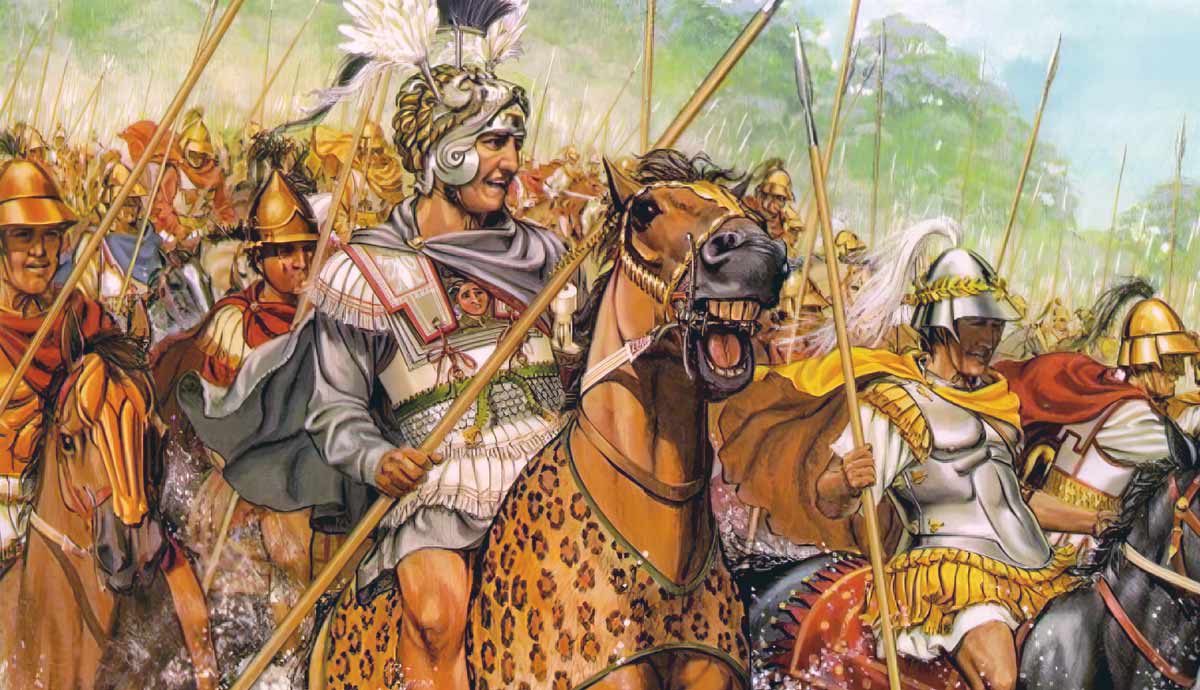
The city of Dura Europos was founded during the early Hellenistic period by Seleucus I Nicator (c.358-281 BCE), sometime around the year 300 BCE. It thrived as an important border city and provincial center under the Parthians and Romans for many years. As a result of its location on the edge of three empires, it experienced a vibrant commingling of cultures. When it fell to the Sasanians in 256-257 CE, it was abandoned and became buried under sand and mud. This meant that much of the city was perfectly preserved when archaeologists rediscovered the site. The many important archaeological finds and their high state of preservation earned Dura Europos the nickname of the “Pompeii of the Desert.”
Dura Europos: Founding & Early History

Dura Europos was founded sometime around 300 BCE by Seleucus I Nicator as a fortress at the east-west intersection of a trade route on the Euphrates. He needed to protect the lines of communication between Antioch and Seleucia, the two much larger and more important cities he founded. It is possible that it was built on the site of a previous town, but the evidence is scant. In antiquity, the city was known as either Dura, the Aramaic word for “fortress,” or Europos in honor of the Hellenistic king who founded it. The use of the name Dura Europos for the city is a modern convention. Some scholars argue that Europos-Dura is a better name for the city as it reflects its essential “Greekness.”
In the 2nd Century BCE, Dura Europos was expanded along the Hippodamian model as a classical Greek city. It was now defined by cross-streets ranged around a large central agora. This was the city that the Parthians captured in 113 BCE when they captured the city from the Seleucids. During the Parthian period, the city lost its function as a military outpost. An influx of new inhabitants increased the population so that all of the space enclosed within the walls was occupied. These new arrivals bore Iranian and Semitic names, and inscriptions from this period were written in Greek, Latin, Hebrew, various Aramaic dialects, Parthian, Middle Persian, and Safaitic.
The Romans Rebuild Dura Europos

In 114 CE, the Roman emperor Trajan occupied Dura Europos for a few years, but it was not until the Roman-Parthian War of 161-166 CE that the emperor Lucius Verus annexed the city. Under the Romans, Dura Europos regained its importance as a military outpost. The Romans used it as a staging post for their conquest of Osroene and then for their attack on the Parthian capital city in 198 CE. When Septimius Severus created the new province of Syria Coele, Dura Europos became an important center of the new province. It was also granted the status of a Roman “colonia,” in 254 CE, which at this time was more of an honorary title for an important city.
By 209 CE, the Romans had added a military camp to the northern part of the site, along with a palace for the commander. In 216 CE, a small amphitheater was added for the soldiers near the military camp. All of this construction transformed the nature of Dura Europos from a thoroughly eastern city into a far more Roman one. However, it still retained its distinctive blend of cultures. At this time, the population of Dura Europos is estimated to have been around 10,000-15,000 people. More conservative estimates claim the area could agriculturally support a population of no more than 5,000-6,000. By this point, however, the Parthians had been replaced by the far more aggressive Sasanians and their great ruler Shapur I (r.240-270 CE).
Sasanian Siege of Dura Europos

Shapur I began his invasion of Roman Mesopotamia in 250 CE and, at the battle of Barbalissos (252 CE), annihilated a Roman army of 60,000. This opened all of Syria to the Sasanian invasion. In response to the Sasanian threat, the walls of Dura Europos were buttressed in order to strengthen them. This was accomplished by covering the street and buildings along the wall with rubble. The exterior of the wall was then buttressed by constructing a sloping mound of earth in front of it, known as a glacis, which was then sealed in mud brick. This was a deliberate and methodical effort that required moving many tonnes of earth. A large swathe of the site was destroyed in the process, but it was hoped that this would protect the city from the Sasanians.

There is, rather unfortunately, no written record of the Sasanian siege of Dura Europos. Most of what we know of the siege comes from the archaeological record. When the siege began in 256 CE, the Sasanians dug a mine under Tower 19 near the Palmyrene Gate. This effort was detected by the Romans, who dug a countermine. The Roman attack through the countermine was beaten off, but the Sasanian mine was abandoned. The Roman wounded and stragglers were sealed in the mine, where they died. A second mining attempt was partially successful, as a tower and its adjacent walls were made to subside. For their third attempt, the Sasanians built a ramp up to the wall at Tower 14 and another mine underneath it. When Sasanian soldiers charged up the ramp to fight with the Roman defenders, their compatriots entered the city through the mine. The city was then sacked, and its population deported. Sporadic evidence for activity on the site can be found as late as the 5th century, but by and large, Dura Europos was never rebuilt.
Excavating Dura Europos

Dura Europos was “rediscovered” in 1885 when the Palmyrene Gate was photographed by John Henry Haynes of the American “Wolf Expedition.” During World War I and the Arab Revolt (1916-1918), British troops occupied the area and explored the site. On March 30, 1920, a British soldier was digging a trench and discovered the wall paintings of the Temple of Bel. Recognizing the importance of the discovery, the soldiers contacted the American Archaeologist James Henry Breasted in Baghdad. Franz Cumont carried out the first archaeological excavation of the site. In the publication of his 1922-1923 dig, he identified the site as Dura Europos and described a temple he had uncovered. Renewed conflict in the area prevented further excavations until the 1930s. These later digs were led by Clark Hopkins and Michael Rostovtzeff and continued until 1937, when funds ran out.

The early excavations of Dura Europos were led by French and American teams. When the excavations resumed in 1986, it was a joint Franco-Syrian effort led by Pierre Leriche. Over the course of the fifteen years that excavations continued, many important finds were made, and the site was thoroughly examined. This resulted in Dura Europos being included on UNESCO’s “Tentative List” of World Heritage Sites in 1999 and again in 2011, the second time along with the nearby ancient city of Mari. The site has yielded a treasure trove of artifacts, both large and small. The most spectacular of these was the religious building inadvertently preserved during the 256 CE siege and the arms and armor worn by the soldiers who fought during the siege.
Pagan Religious Buildings of Dura Europos

As a result of its position as a frontier city on a major trade route, Dura Europos was home to a variety of different religious groups. Many of these appear to have had their own blocks or sections in the city. The greatest diversity of temples is understandably found among the various pagan religions. The oldest temple was the Temple of Artemis Nanaïa, built during the Seleucid period. Most of the other pagan temples were built during the Parthian period and were dedicated to Hellenistic and Palmyrene deities. These include the Temple of Bel, the Necropolis Temple, the Temple of Atargatis, the Temple of Zeus Theos, the Temple of Gadde, the Temple of Adonis, the Temple of Artemis Azzanathkona, the Dolicheneum (temple of Jupiter Dolichenus and Zeus Helios Mithras Turmagade), the Temple of Zeus Megistos, and the Temple of Zeus Kyrios. The size of these temples ranges considerably from small private shrines to larger public buildings.

Also, among these temples was one of the best examples of a Mithraeum known to have survived from antiquity. This was a temple where Roman soldiers practiced the rites of the Mithraic Cult. This Roman mystery cult centered on the god Mithras and though inspired by Iranian Zoroastrianism, was very popular amongst the soldiers of the Roman army. No written theological tracts have survived, so much of what is known is based on the interpretation of surviving Mithraic imagery. The statuary and altars of the Mithraeum of Dura Europos were found intact, and along with the surviving frescoes and graffiti, have contributed enormously to our understanding of the Mithraic Cult. Though once popular enough throughout the Roman Empire to have rivaled Christianity, Mithraism was largely suppressed beginning in the 4th century.
Jewish & Christian Religious Buildings of Dura Europos

The city of Dura Europos also had both a synagogue and a house church. The synagogue consists of a forecourt, a house of assembly, and a Torah shrine facing Jerusalem. It was decorated with painted walls depicting both people and animals. These extensive, figurative wall paintings were a surprise to scholars who had not expected to find such a thing due to Judaism’s prohibition of visual images. It is believed that they served an instructional purpose for worshippers. An Aramaic inscription dates it to around 244 CE, making it one of the oldest synagogues in the world. It was covered with sand in preparation for the Sasanian siege, which helped to ensure its survival and preservation.

Like the synagogue, the house church was also preserved as a result of being covered in sand. It is the oldest known house church, dating to 235 CE. The building is fairly simple in design, consisting of a house conjoined to a separate hall-like room. No altar was found, but archaeologists did uncover a baptistry. The surviving frescoes are the earliest church wall paintings yet discovered and are possibly the earliest known examples of Christian art as well. They clearly follow the Hellenistic-Jewish iconographic tradition, though they are more crudely executed than those of the nearby synagogue. The depictions of “The Good Shepherd,” the “Healing of the paralytic,” and “Christ and Peter walking on water” are the oldest depictions of Jesus.
Arms and Armor

Some of the most important archaeological finds from Dura Europos are of arms and armor from the 256 CE siege. These include examples from both the Roman garrison and the Sasanian besiegers. The most spectacular finds, however, are the horse armor and the Roman shields. During the 3rd Century CE, both the Romans and the Sasanians made use of heavily armored cavalry known as cataphracts. Both horse and rider were encased in armor so that they could charge directly into enemy formations. At Dura Europos, archaeologists uncovered a detailed graffito depicting a cataphract and two sets of horse armor. This armor was made from nearly 2,000 individual overlapping thin, scale-like plates bound together with wire. One armor is made from steel or iron, and the other is made from bronze. No other such armors have been recovered from any other site. These armors were in Tower 19 when it partially collapsed during the siege, which buried and preserved them.

Archaeologists also uncovered two almost perfectly preserved wooden shields, known as the scutum from Dura Europos and the Homeric shield from Dura Europos. The scutum is rectangular and semi-cylindrical in shape. Several of the metal fittings, such as the umbo (central boss), are missing, but otherwise, the shield is largely intact. It is decorated with paintings of an eagle with a laurel wreath, winged victories, and a lion. The Homeric shield is the most spectacular of three circular shields that were found pressed together in an embankment. It was also made of wood, is missing most of its metal fittings, and, unfortunately, is more damaged than the scutum. It is decorated with scenes from the Trojan War. Specifically, it depicts the Trojans welcoming the Trojan Horse into the city and then the resulting fall and sack of Troy by the Greeks.
The Destruction of Dura Europos 2011-2015

Despite being recognized as a potential UNESCO World Heritage Site, Dura Europos was heavily damaged by ISIS during the ongoing Syrian Civil War. Although ISIS has often destroyed pre-Islamic sites and artifacts on the grounds that they are “idolatrous,” the sale of looted antiquities has been and remains an important source of income for the group. Taking advantage of the chaos caused by the civil war, between 2011 and 2014, they extensively looted the site of Dura Europos. In 2015 satellite imagery showed that looters had destroyed an estimated 70% of the site. National Geographic later reported further looting on a massive scale had continued to occur after that as ISIS became desperate to secure more funds.

Information on the state of Dura Europos has been hard to find since 2015, though there were reports of continued looting and destruction as late as 2017. The ongoing Syrian Civil War makes a detailed survey of the site impossible at this time. However, many of the great archaeological treasures from Dura Europos were preserved. Since the excavations of the 1920s and 1930s were led by Franco-American teams, many items were brought to the United States and France as part of deals that were made with the then-Syrian government. Today many of these artifacts, including the walls of the Mithraeum, House Church, and Synagogue, can be seen in such places as the Yale University Art Gallery or the Louvre. Today, they are a stark reminder of just how easily objects that have survived for millennia can be lost to modern conflicts and of the importance of making sure that these places are preserved and protected for all to see and explore as part of our shared human heritage.










